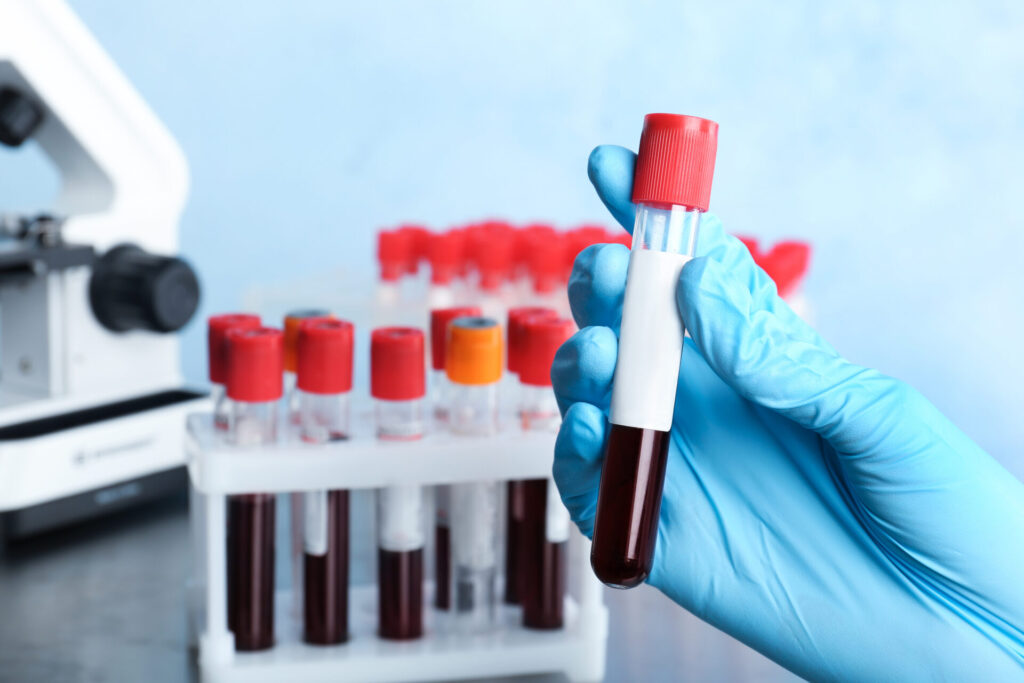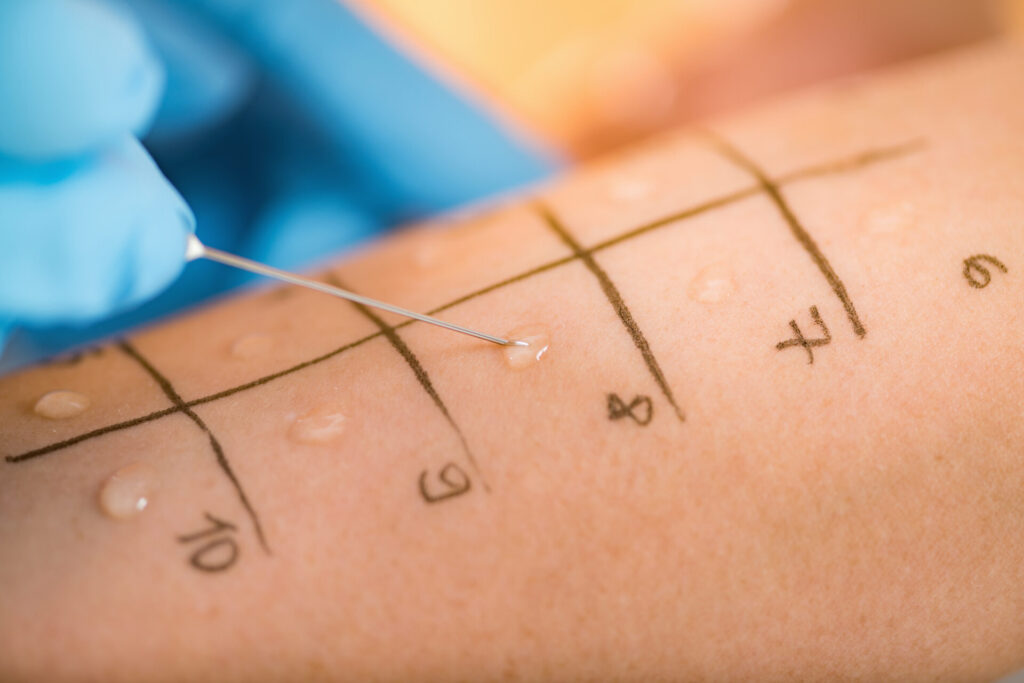If you think you are allergic to a particular allergen, or you know you have allergies but you’re not sure what your triggers are, you need to undergo thorough allergy testing. Both children and adults can develop allergies to certain substances at any time and will often be left to wonder, “What exactly is causing my reactions, and how do I treat my allergy symptoms?”
Testing offers clarity about your body’s allergy triggers and your best course of action for treatment or management. When it comes to testing for allergies, there are two testing types: blood and skin tests.
Blood Testing

Next to a skin test, an allergy blood test is the second most common test available and is primarily performed when skin testing is not recommended. Reasons an allergist may require a blood test over a skin test can include:
- The patient is on a particular medication that would interfere with skin test results—an antihistamine, steroid, or certain antidepressant, for instance.
- The patient cannot withstand the many scratches needed for the skin test.
- The patient has a skin condition, such as eczema, psoriasis, or urticaria.
- The patient has certain conditions, such as poorly managed asthma or an unstable heart.
- The patient is at risk of developing anaphylaxis after exposure to the skin test samples.
Additionally, an allergist may order a blood test to determine if a patient is no longer affected by an allergy or to see how well a specific treatment is working. They may also order a blood test over a skin test when evaluating a patient’s response to particular foods.
How Do Allergy Blood Tests Work?
When your body responds to an allergen, it forms particular antibodies, such as Immunoglobulin E (IgE), within your bloodstream. Once formed, these antibodies signal the release of certain chemicals that will fight off the allergen and cause the patient to experience allergy symptoms.
Allergy blood tests evaluate the amount of these allergen-specific antibodies in your blood that only appear when your body responds to a trigger.
Allergens that a blood test can screen for include:
- Dust mites
- Pet dander
- Pollens
- Mold spores
- Food proteins
Skin Testing

Allergy skin testing is the most preferred and most thorough allergy test available as it can test for a wide range of allergens and shows precisely what triggers a patient’s allergic response. It is performed on the skin, usually the back or arms, and involves the allergist applying an allergen sample to the skin.
Patients who undergo skin allergy tests should not be on certain medications that would negatively impact results, such as antihistamines, certain steroids, or even certain antidepressants.
There are a few types of allergy skin tests available, including:
Scratch or Prick Testing
Scratch testing, sometimes called prick testing, is the most common version of the skin test and involves your allergist:
- Marking the surface of your skin, sectioning and labeling the area with the names of the allergens that will be applied. Scratch tests can include up to 50 allergen samples at a time.
- Applying small drops of each allergen to its designated area of the skin.
- Lightly scratching or pricking the skin to ensure the body receives the allergen.
You and your allergist will then wait 15 to 20 minutes to give your body time to react. Any allergens that trigger a reaction will cause small red bumps or irritation to appear on their sections of skin. Some patients may only experience a reaction in one or two sections, while others can experience reactions in most or all of the sections.
Intradermal Testing
Intradermal testing is similar to the scratch or prick test, but instead of scratching or pricking an allergen into the skin, your provider will inject allergen samples into the skin, just below the surface.
After a short period of time, you will be able to see results, if any, in the form of a skin reaction, just as you would the scratch or prick test.
In most cases, an intradermal test is used to further test allergens your provider thinks you are allergic to but did not cause reactions during your scratch test.
Skin Patch Testing
Skin patch testing is similar to a scratch or prick test in that allergens are applied to the skin, usually the back. The difference, however, is that instead of having an allergen drop scratched or pricked into the skin:
- Your allergist will apply adhesive patches containing allergen samples to the skin so that you will absorb the allergen over a period of time, usually 48 hours.
- You will wear the patches as directed and will return to your allergist’s office when scheduled to review the results.
Like the scratch or prick test, you can determine which allergens trigger a response based on the level of skin irritation per patch.
At Langford Allergy, we specialize in allergy testing and can help you determine all your allergy triggers!
Dr. Langford and our team perform thorough allergy testing so that you can find the treatment and relief you need. No matter your allergens, we provide treatments and informational guidance about how to avoid your triggers and manage symptoms in the event of a reaction. Schedule your allergy test today by calling 478-787-4728!
Related articles:
Start 2023 Off Right with a Comprehensive Allergy Test
